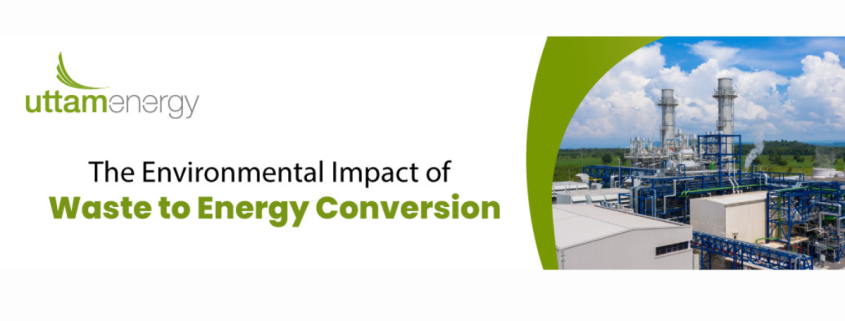The Environmental Impact of Waste to Energy Conversion
In the relentless pursuit of environmental sustainability, the need for inventive waste management solutions becomes increasingly evident, especially in densely populated metropolises like Delhi, Bangalore, Mumbai, and Pune.
The data underscores this urgency: Delhi generates over 9,000 metric tons of waste daily, Bangalore grapples with around 4,000 metric tons, Mumbai surpasses 7,000 metric tons, and Pune deals with approximately 1,600 metric tons each day.
Against this backdrop of escalating waste generation, waste-to-energy conversion emerges as a pivotal solution that not only addresses waste effectively but also yields useful energy.
This blog delves into the profound environmental impact of waste-to-energy conversion, backed by relevant data and statistics, emphasizing its indispensable role in paving the way toward a more sustainable future for all.
Must Read: Unveiling the Environmental Potential of Waste-to-Energy Initiatives
The Environmental Impact of Waste to Energy Conversion:

Greenhouse Gas Emissions:
Fighting Climate Change, A significant environmental benefit of waste- to- energy conversion lies in its implicit to shorten greenhouse gas emissions. Landfills are notorious sources of methane, a potent greenhouse gas exacerbating climate change.
Still, by carrying methane during the conversion process, it can be utilized as a precious energy source, substantially dwindling its release into the atmosphere.
Energy Generation:
Powering a Sustainable Future Waste-to-energy solution yields a renewable energy source, reducing our reliance on fossil fuels. This innovative process harnesses the energy content of waste materials, transforming it into electricity or heat.
The useful energy generated can power homes, businesses, and even contribute to the local energy grid, promoting sustainable and diversified energy production.
Resource Recovery:
Embracing the Circular Economy Waste-to-energy conversion not only generates energy but also enables the recovery of valuable resources from waste.
Through cutting-edge technologies, precious materials like metals, glass, and plastics can be extracted and recycled, diminishing the need for virgin resources.
This resource recovery approach fosters the principles of a circular economy, conserving natural resources and reducing waste generation.
Air Pollution Control:
Safeguarding Our Atmosphere Modern waste-to-energy facilities are equipped with advanced emission control systems, prioritizing clean air standards.
Technologies such as scrubbers and filters are employed to capture and eliminate pollutants before their release.
This rigorous air pollution control ensures the maintenance of high air quality standards, safeguarding public health and the environment.
Conclusion:
Waste-to-energy conversion offers a sustainable solution to address waste management challenges while minimizing environmental impact.
By reducing waste accumulation, mitigating greenhouse gas emissions, generating useful energy, recovering valuable resources, and controlling air pollution, this transformative approach embodies responsible waste management and environmental stewardship.
As we strive towards a greener and further sustainable future, embracing waste- to- energy conversion technologies become pivotal.
By supporting similar initiatives and promoting responsible waste practices, we can collectively pave the way for a cleaner, healthier, and more sustainable world.



